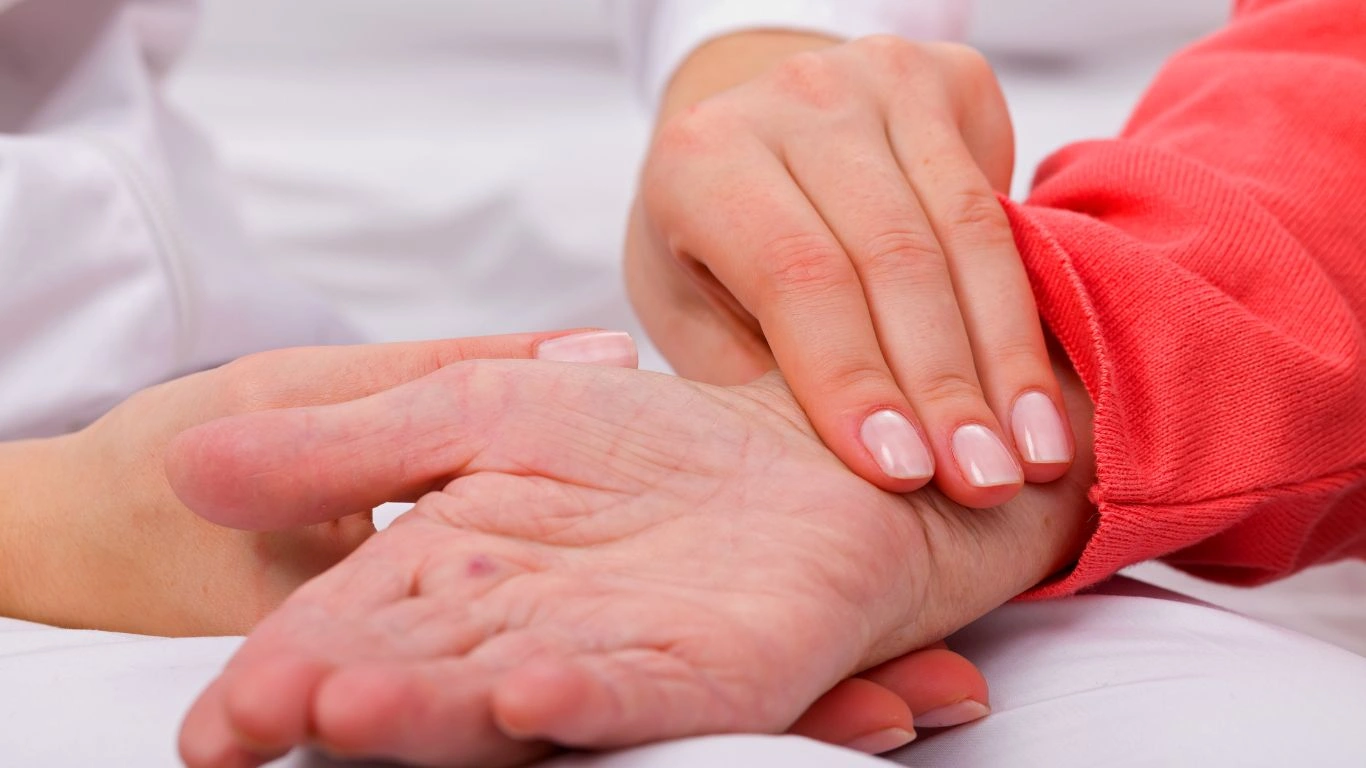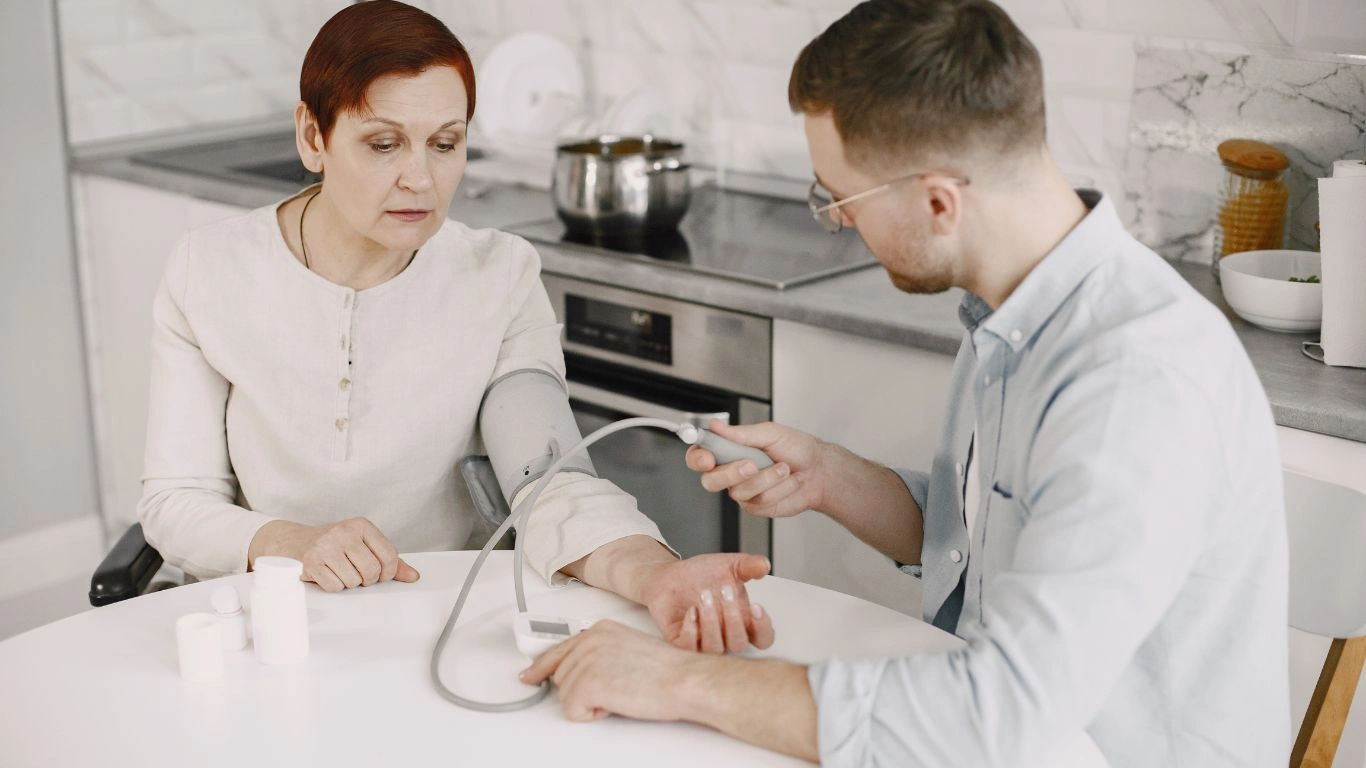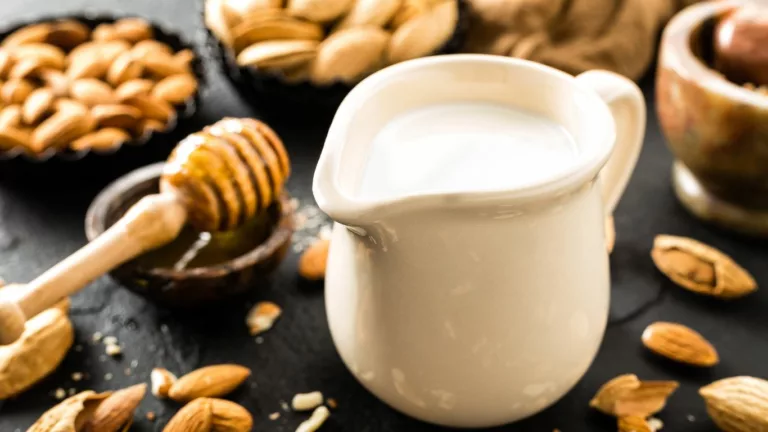Blood Pressure and Menopause: Must-Know Risks & Relief Tips
If you’re navigating the rollercoaster of menopause and suddenly your blood pressure is creeping up for no clear reason—you’re not imagining it. Blood pressure and menopause: what to know is a topic I find myself discussing more and more often in the clinic. I’ve been an Internal Medicine Physician for over a decade, and let me tell you—this isn’t just a coincidence or “getting older.” There’s a real, physiological shift going on, and the way your body handles blood pressure during and after menopause is different than before. Let’s talk about what’s really happening behind the scenes, in a way that’s not just scientific jargon.
Why Blood Pressure Becomes a Thing During Menopause

When estrogen starts to decline (and let’s be honest, it feels more like it nosedives), everything from mood to metabolism changes. But one of the sneakiest shifts is how your body manages blood vessel flexibility and sodium balance. That matters a LOT for blood pressure.
Estrogen helps keep blood vessels dilated and relaxed. When levels drop, the arteries become a bit stiffer, and that can raise systolic blood pressure. I often tell my patients, “Your heart and vessels have been used to estrogen’s help their whole life. When that support fades, the system gets tense—literally.”
Real Talk: It’s Not Just About Aging
People love to chalk everything up to aging, but that’s not the full story. I’ve seen women in their early 50s—otherwise healthy—suddenly start logging blood pressure readings in the 140s over 90s. They didn’t gain weight, they didn’t change their diet, and they’re still exercising. The only major change? They’re perimenopausal or menopausal.
So yes, while age plays a role, hormonal shifts have a direct impact too. That’s why blood pressure management around menopause needs to be more personalized. It’s not one-size-fits-all.
Blood Pressure and Menopause: What to Know About the Symptoms

Here’s where it gets tricky—high blood pressure doesn’t always come with red flags. But during menopause, a few subtle signs might give it away:
- Frequent headaches, especially in the morning
- Unexplained anxiety or palpitations
- Fatigue or that foggy-brain feeling (yes, that can be vascular too)
- Sleep issues—not just hot flashes but actual trouble staying asleep
- Dizziness when standing too quickly
Now, those symptoms can be part of “typical” menopause, which is what makes this overlap so confusing. I had one patient—let’s call her Linda—who came in convinced she was just stressed. She was waking up at 3 a.m., couldn’t focus, and had pounding headaches. Her BP was 158/96. Turns out, it wasn’t just menopause; it was hypertension creeping in under the radar.
The Salt Sensitivity Factor
One of the most under-discussed pieces of this puzzle is salt sensitivity. During menopause, your kidneys’ handling of sodium can change. That means foods you once tolerated—like popcorn at the movies or even a salty soup—might start triggering blood pressure spikes. It’s frustrating, I know, especially when you haven’t changed your eating habits.
What I usually recommend is a short-term dietary log. Just three to five days of tracking meals and blood pressure readings can give us huge insight. It’s eye-opening how a sushi dinner on a Friday night can throw off Saturday’s reading by 10 or 15 points.
What Happens to Blood Vessels Post-Menopause?

This is the part that isn’t talked about enough. Post-menopause, the cumulative effect of estrogen loss continues. Your blood vessels not only get stiffer, but the lining of the arteries—called the endothelium—also becomes less responsive to signals that normally tell it to relax. This can result in:
- Increased vascular resistance (translation: your heart has to work harder)
- Reduced nitric oxide production, which is key for keeping arteries wide open
- More inflammation in vessel walls, especially if there’s also insulin resistance
I always think of it like this: before menopause, your vessels were like soft rubber hoses. After? They’re more like garden hoses left out in the sun—less flexible and more prone to cracking under pressure.
Should You Be Monitoring at Home?
Short answer: yes. Especially if you’re over 45 and in any stage of menopause. A home monitor can catch trends that might go unnoticed during a rushed office visit.
Here’s what I suggest:
- Check your BP first thing in the morning, before coffee or meds
- Record it at the same time each day for consistency
- Bring your readings to your doctor, even if you think they’re “not that bad”
It’s about building a pattern, not just chasing one bad number.
How Lifestyle Tweaks Can Make a Bigger Impact Than You Think

Okay, let’s talk practical stuff. When I see menopausal patients with rising blood pressure, the first instinct is often to say, “Just give me the pill, doc.” But hear me out. Some small, intentional lifestyle tweaks can actually make meds more effective—or delay the need for them altogether.
We’re not talking a total life overhaul. I mean doable, realistic shifts. Here’s what I see move the needle the most:
- Cutting back on processed carbs: Not keto, not extreme, just less white bread, chips, and boxed stuff. These spike insulin, which worsens vascular tension.
- Daily movement: Even walking 30 minutes most days improves endothelial function. I always say, motion is lotion—for your joints and your vessels.
- Mindful hydration: Dehydration makes blood thicker, and that raises pressure. Women often drink less in menopause to avoid frequent bathroom trips, but that can backfire.
- Sleep hygiene: Blood pressure dips at night… unless you’re tossing and turning. Prioritize sleep like it’s medicine. Because honestly, it is.
One of my patients, Marsha, started walking her dog every evening after dinner—nothing fancy, just 20–25 minutes around the block. Her blood pressure dropped from borderline-high to completely normal in six weeks. No meds. Just sneakers and commitment.
Weight Gain Around the Middle: It’s Not Just Vanity
Let’s talk about that stubborn belly fat that tends to show up uninvited during menopause. It’s not just frustrating for your jeans—it’s metabolically active. That visceral fat releases compounds that promote inflammation and raise blood pressure. I see it all the time in labs and scan results.
But here’s the hopeful news: it’s reversible. Reducing abdominal fat through gentle weight loss, strength training, and insulin-balancing meals often translates to lower blood pressure without needing to add new meds. I’m not saying it’s easy, but it is worth it.
The Role of Stress in Blood Pressure Spikes After Menopause

This one’s huge. And often overlooked. The hormonal upheaval of menopause makes many women more sensitive to stress. Combine that with career demands, caregiving (often for both kids and aging parents), and sleep struggles—hello, cortisol overload.
Cortisol is the body’s main stress hormone, and it directly affects blood pressure. When it’s high, your body stays in “fight or flight,” constricting vessels and raising pressure. The kicker? Many of my patients don’t even realize they’re carrying chronic stress because it’s just become their normal.
I usually recommend the following:
- Breathing exercises: 5–10 minutes of deep belly breathing, especially in the morning or before bed.
- Journaling: Sounds cliché, but it works. Just brain-dumping worries onto paper can reduce mental clutter and lower stress hormones.
- Digital detox windows: One hour a day with zero screens. No scrolling. No doom-clicking. Just quiet or connection.
If meditation feels intimidating, start small. One of my patients, a busy corporate exec, simply began sitting outside with her tea for ten minutes each morning—no phone, no news. Within a month, her average BP readings dropped by 8–10 points.
What About Medications? When Lifestyle Isn’t Enough

Look, I’m all for natural approaches. But sometimes, despite best efforts, the numbers stay stubbornly high. And that’s when meds become not just helpful but necessary. Left untreated, hypertension increases your risk for heart disease, kidney problems, and strokes—especially after menopause.
Here’s what I typically walk my patients through:
- Thiazide diuretics: Often a first-line option. They help the body release excess sodium and water.
- ACE inhibitors or ARBs: Great choices, especially if there’s also a history of diabetes or kidney concerns.
- Calcium channel blockers: Sometimes used in women with more vascular stiffness, which can be more pronounced post-menopause.
But—and this is important—starting meds doesn’t mean you stop working on lifestyle. I’ve seen many women reduce their dose or even come off meds entirely with consistent changes.
Monitoring Side Effects in Midlife Women
This is where experience really matters. Women often metabolize and respond to medications differently post-menopause. I’ve seen cases where a low-dose med causes fatigue or swelling that wasn’t anticipated. That’s why close follow-up matters. A good physician listens to your lived experience—not just the numbers.
If something feels off, speak up. I always tell my patients, “You know your body better than any chart. If it doesn’t feel right, it probably isn’t.” Adjusting doses or switching classes can make all the difference.
Blood Pressure and Menopause: What to Know About the Long Game
Managing blood pressure during and after menopause isn’t a one-time fix—it’s a long-term partnership with your health. I encourage my patients to think in seasons, not days. Some months your numbers will be steady. Others might spike because of life stress, travel, illness, or hormones. That’s normal. The key is pattern awareness.
And just as importantly, give yourself grace. This phase of life isn’t about perfection—it’s about adaptation, consistency, and tuning into your body with curiosity, not judgment. You’ve done hard things before. This? You’ve got this too.
How Blood Pressure After Menopause Affects Long-Term Health

Here’s the thing we can’t sugarcoat: consistently high blood pressure post-menopause increases the risk of several serious conditions. And not in a hypothetical way—I’ve seen it firsthand with patients who seemed “fine” for years, only to end up with a cardiac scare or stroke out of the blue.
Let’s break it down. When elevated blood pressure quietly lingers for years, it starts to damage the endothelium—the inner lining of arteries. This damage doesn’t cause pain, so you won’t necessarily feel it. But over time, it promotes plaque buildup, hardens arteries, and leads to complications like:
- Heart attacks: Women’s symptoms often present differently than men’s—think fatigue, nausea, shortness of breath, not the classic chest pain.
- Strokes: High blood pressure is the leading cause. I’ve had multiple patients who were doing “everything right” but didn’t know their BP was spiking at night.
- Kidney disease: Your kidneys are full of tiny vessels. Chronic high pressure overwhelms them, reducing function over time.
That’s why I never downplay the importance of routine monitoring—even if you feel totally fine. It’s not about being obsessive; it’s about being proactive. Your future self will thank you.
What I Wish More Women Knew About Their Numbers
In my practice, I’ve noticed a pattern: women often dismiss slightly elevated readings, especially when they’re “just a little over 130/80.” But here’s the deal—those numbers matter. Consistently trending upward, even mildly, is like a slow leak in your tire. You might not notice it day to day, but eventually, you’ll feel the flat.
Tracking patterns over weeks or months gives us much better insight than a single office reading. White coat hypertension is real, but so is masked hypertension—where numbers spike at home but look fine in the clinic. That’s why home monitoring is such a game-changer.
How to Talk to Your Doctor About Blood Pressure and Menopause

If you’re in perimenopause or menopause and noticing new symptoms—headaches, fatigue, dizziness, anxiety—it’s worth bringing up your blood pressure during your next visit. And not just in passing. Be specific.
Here’s how I recommend approaching it:
- Bring a log of your home readings, if you’ve been tracking.
- Mention any changes in sleep, stress, weight, or medication.
- Ask directly: “Could menopause be impacting my blood pressure?”
Honestly, even as a physician, I think the medical field hasn’t always connected the dots well between hormones and cardiovascular health. But the evidence is growing, and doctors are catching up. Still, you have to advocate for yourself. The more information you share, the better we can support you.
When to See a Specialist
In some cases, it makes sense to loop in a cardiologist—especially if:
- Your blood pressure stays elevated despite lifestyle changes and meds.
- You have a strong family history of heart disease or stroke.
- There are signs of organ involvement (like protein in urine or vision changes).
That doesn’t mean something scary is happening, but it does mean you deserve a deeper dive. A collaborative approach—primary care, maybe a GYN, plus a cardiologist when needed—is often the most effective.
Blood Pressure and Menopause: What to Know to Stay Empowered
To wrap things up, here’s what I want you to take away: menopause is a major transition, yes. But it’s also a chance to recalibrate, reconnect with your body, and take ownership of your health in new, empowering ways. Blood pressure and menopause: what to know isn’t just about numbers—it’s about noticing, questioning, and acting on what your body’s telling you.
Some quick takeaways I always share with my patients:
- Track, don’t guess: Blood pressure fluctuates. Your readings matter.
- Be proactive: Don’t wait for symptoms. Prevention always wins.
- Prioritize YOU: Menopause is not the time to put your health last.
I’ve seen too many women treat this stage as something to just “get through.” But it can be the beginning of a stronger, wiser, more attuned version of you. And managing your blood pressure is one of the most powerful steps in that journey.
References
- National Institutes of Health (NIH)
- Health.com
- Centers for Disease Control and Prevention (CDC)
- Mayo Clinic
- American Heart Association
Disclaimer
This content is for informational purposes only and does not substitute professional medical advice, diagnosis, or treatment. Always consult with your physician or qualified health provider regarding any medical condition. As an Internal Medicine Physician, the information shared reflects general clinical observations and educational intent. Every individual’s health situation is unique and should be addressed accordingly.

Dr. Gwenna Aazee is a board-certified Internal Medicine Physician with a special focus on hypertension management, chronic disease prevention, and patient education. With years of experience in both clinical practice and medical writing, she’s passionate about turning evidence-based medicine into accessible, actionable advice. Through her work at Healthusias.com, Dr. Aazee empowers readers to take charge of their health with confidence and clarity. Off the clock, she enjoys deep dives into nutrition research, long walks with her rescue pup, and simplifying medical jargon one article at a time.






